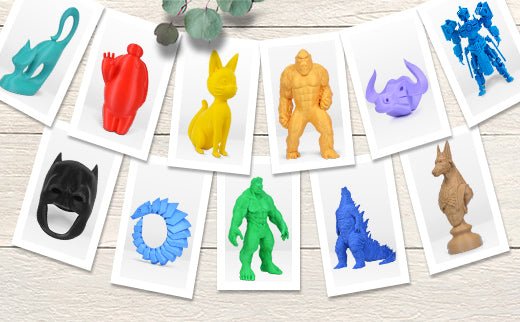Trending searches
Popular collections
Popular products
Cart ($0)
Cart ($0)

3D printing has become quite popular in the last few years to make complex shapes allowing new possibilities in many industries. Significant impacts are seen in industry, medicine, agriculture, and many other fields. According to results from research, up to 98.81% accuracy is achieved with commercial FDM printers. Is it easy to achieve an outstanding quality such as this?
Many factors can help you achieve high quality and an accuracy of almost 99% through the tips and tricks mentioned in this article. Without further delays, let’s hope on!
The suitable material is a defining quality and expense for the model you need. You can choose any material, but assessing the design’s purpose will save you time and money. Explore all possible options and experiment a little to enhance your capability.
PLA – Polylactic Acid is one of the most common materials for FDM 3D printing because of its rigidity and brittleness. Use it for ornamental models or if you want to learn more about 3D printing as a starter, as it is easier to build.
ABS – Acrylonitrile Butadiene Styrene, stronger but challenging to build, ideal for functional parts. So, choose it as such because it is inflexible.
PETG – Polyethylene Terephthalate is stronger than PLA and more flexible than ABS. Perfect for outdoor models as it has good chemical resistance.
Nylon – Strongest and most flexible, suitable for tools and functional parts because it is durable.
Store your filament spools properly and keep them wound at all times. Any careless knots or breaks can cause clogging in the extruder and damage in printing.
Consider storage space if you keep a few spools for backup and free of humidity. You don’t want your feed to go stale so keep absorbents or air jar containers. We also recommend using Filament Filters to keep your spools clean and oiled.
The best complexity is the simplest. You can save tons of time and cost if you work on that. Splitting your model into two or more parts can save much material on supports and be made individually. After you are done with parts, you can join them together quickly afterward.

Depending on the size of your FDM printer and the material used, your design will always have limitations. You should not reduce the thickness of the model’s walls to less than 1mm, making it safer for FDM printed designs. The more complex the shape, the more safety cushion you require. Furthermore, you need more space between interlocking parts. Anything higher than 0.4mm is considered safe.
Take a look at the image below. The one on the left is more prone to failure if force is applied to either end. The model on the right has a brace to support both legs of the angle, supporting it. Most slicer and 3D designers in the market allow you to analyze your model based on different preferences. Learn to use them and fix errors in your 3D models as they come along.

As we discussed above regarding splitting the model and allowing bracing, managing holes orientation is also essential. The model on the left requires support as the top arm can bend under the weight. Your printer can easily print the hole on the right with a vertical axis orientation. A simple rotation does the trick.

Now, if you have multiple holes in different directions and orientations, here is what you should do. Prioritize the blind holes first. When they are covered, you can prioritize smaller holes, so they don't get smothered under the wait. Lastly, you must consider which hole is more critical to the model design and work from there.
Make it easier for your printer when it comes to the polycount of your design. You don’t want a processing nightmare for an intricately designed model. Keep the polycount as low as possible, or split the model to keep the polycount in check.
Each filament type and manufacturers have different recommendations for extrusion temperatures. Please follow those suggested temperatures with a buffer of 10 degrees higher or lower. Significant changes can cause lower-quality FDM outputs. You don’t want your model to have wrinkles, spilling, or sticking where not needed.

The platform should be heated adequately to allow the print to stick with it and give the printing parts above sturdiness.
This is the most critical part. Your tools are what makes or break your design. You should not spend on an expensive machine which isn’t up to the mark. If you are new to 3D printing, why not consider optimal-priced 3D FDM printers?
The LK5 Pro FDM printer from Longer has sufficient spacing to allow for larger designs, as it also has an upgraded dual blower kit. You can also choose the LK4 X FDM printer with a direct dual-gear extruder.

Talking to the manufacturers or getting recommendations from your friends and others in the field is always the best choice.
The strength of your 3D print is crucial, especially for functional tools. Epoxy resin coating after you are done printing can enhance the strength of your product. The coating adds a hard layer outside your print. It will also help hide all the layers and extrusions left on your surface due to supports and joints.
!
